
Protecting the wood turtle at risk
La Mauricie National Park
Wood turtles help maintain wetlands by feeding on dead animals, insects and plants. They also serve as an indicator of the state of these ecosystems, given their sensitivity to the impact of human activities. The wood turtle is a threatened species according to the Committee on the Status of Endangered Wildlife in Canada (COSEWIC). The status of the species in La Mauricie National Park is considered poor. The main threats to its survival are habitat loss, predation and road mortality.
To protect the wood turtle and its habitat, La Mauricie National Park's conservation team has been implementing recovery measures since 1996, as well as an ecological integrity monitoring program to track population status. All this is included in the Multi-species Action Plan for La Mauricie National Park and National Historical Sites of La Mauricie and Western Quebec regions, which was developed in 2022. An Action Plan to Protect Turtles in La Mauricie region is currently being developed through regional collaboration. It includes wood turtle recovery strategies aimed at reducing road mortality, protecting habitats, acquiring knowledge, raising awareness and educating the public.
Monitoring and protecting turtles, from egg laying to hatching
Every year since 1996, La Mauricie National Park has been monitoring the wood turtle population at its main nesting site. In June, the team counts the number of females laying eggs and locates their nests.
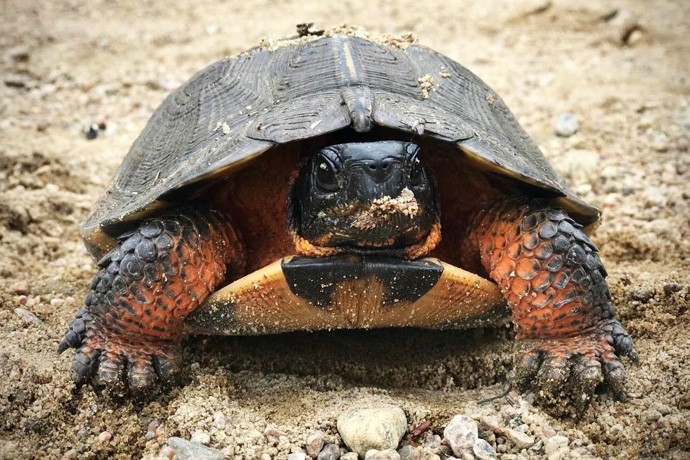
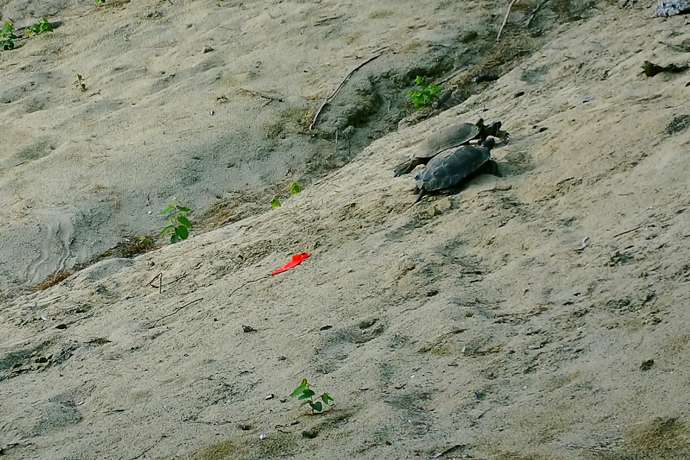
In August and September, the team studies the reproductive success. There are around 8 to 12 turtle hatchlings per nest. A mesh screen is placed over the nests, and they are monitored in the morning and evening to protect the hatchlings from predators. The team transports the hatchlings to the nearest waterway as soon as they hatch to keep them safe from raccoons, skunks, foxes, crows and ravens.
Transcript
[Parks Canada logo]
[Naomie Dontigny] Hello everyone, my name is Naomie Dontigny and I am a student[A wood turtle moves about in a waterbody. The Parks Canada logo displays. Intro music]
with the conservation team of La Mauricie National Park.
[Naomie Dontigny is kneeling in front of mesh screens.]
Today we are at the spawning site where we do our research
[Close-up of a wood turtle in shallow water.]
and protection work, of the wood turtle.
[Three wood turtles. One of them moves about.]
The wood turtle is a species that is threatened and whose population is really not doing well.
[Naomie opens her hands to show us something.]
So today we have a hatching. This means that our baby turtles have hatched from their eggs.
[Close-up of a turtle that has just hatched from its egg. The turtle rests on the egg’s remains.]
So they have come out of their nest, and we are going to see how we, the conservation team,
[New shot on Naomie who is still holding the turtle on its egg’s remains.]
help them get into the water.
[Two employees are walking around near a waterbody. One of them is carrying a basket in one hand.]
So first of all, when we arrive at the site, we look through our mesh screens.
[New shot on Naomie, still kneeling in front of the mesh screens.]
The screens are for a specific use, only to protect the wood turtle, our babies,
[Two shots on four turtles inside mesh screens.]
so they don't get preyed upon by raccoons, skunks, foxes or others.
[New shot on Naomie who is still holding the baby turtle.]
When we arrive, we count the number of turtles that have just hatched
[Naomie gets up and moves the mesh screens. She then picks up the turtles and places them in a basket beside her.]
and then we open it and take them and put them in a jar.
[Close-up on the turtles that Naomie is picking up and placing in a basket.]
Afterwards, we dig up the turtle's nest to see how many shells are in the nest.
[Naomie digs in the ground and retrieves a shell.]
So after checking the survival rate up at the spawning site, it's time to release them into the water.
[Naomie is standing in front of a waterbody.]
This release actually increases the survival rate of our baby turtles
[An employee puts down the turtles at the edge of the waterbody.]
as there could be predators between the nest and the water that could eat them.
[Close-up on the turtles swimming in the waterbody.]
So this will give them a helping hand to survive.
[Naomie smiles at the camera.]
[Parks Canada logo]
[Canada logo]
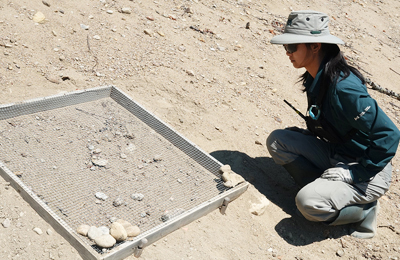
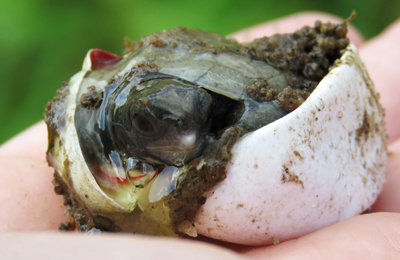
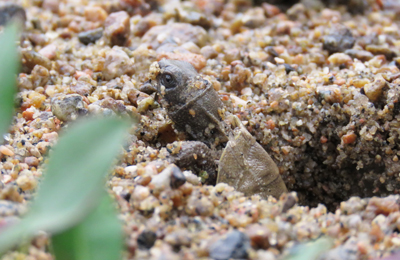
With the help of collaborators, the conservation team weeds the main nesting site to maintain it as a suitable place for laying eggs the following spring.
The team has also set up a new nesting site in La Mauricie National Park to encourage wood turtle reproduction in an area they often frequent and where few natural nesting sites are available. The site is covered with sand and located near a stream and wetland so that the hatchlings can quickly get to safety from predators.
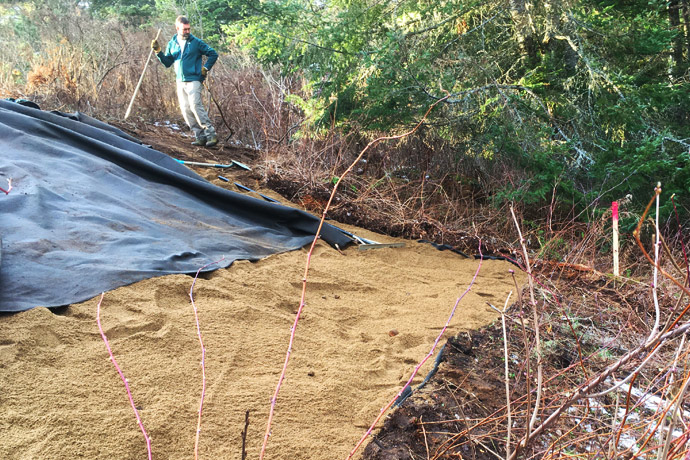
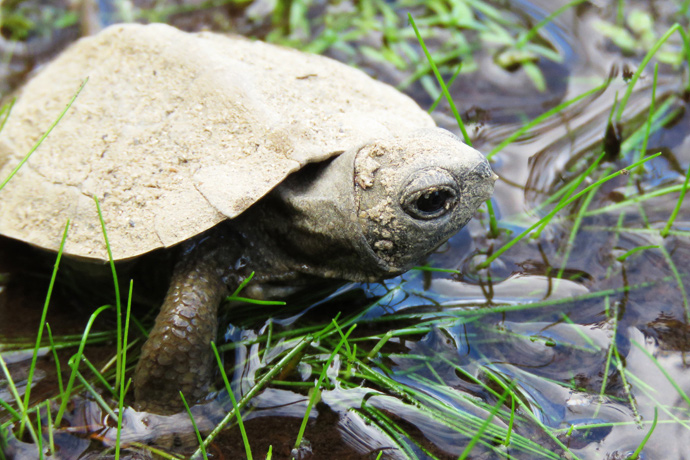
Wildlife cameras help provide a better understanding of turtles' presence at egg-laying sites. The park may temporarily close certain areas to protect these sensitive sites. Protective measures pay off! In 2023, the team recorded the highest number of nests at the main nesting site in 20 years.
Tracking turtles using telemetry
Every year from May to October, the park's conservation team tracks wood turtles using telemetry to learn about their movements and identify the most important areas to them in order to protect them. Several types of telemetry transmitters are used, depending on the age of the turtles and technological preference (VHF or GPS). The transmitters are lightweight and do not interfere with turtles' movement.
The team installs one or two transmitters on each new turtle to track its movements and locate it using a telemetry receiver. Age, sex, weight and height are recorded. The team also checks for wounds, parasites and amputations. Each turtle is given a unique number, which the team marks on its shell using small indentations. That way, the team can identify the turtle and track its growth. This procedure is the equivalent of filing the end of a long nail and is painless for the turtle. The team also documents its habitat, food and behaviour.
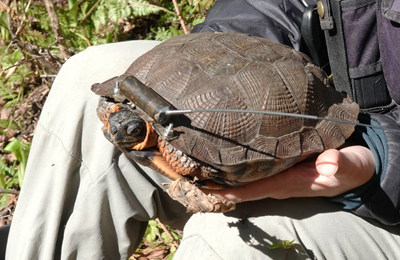
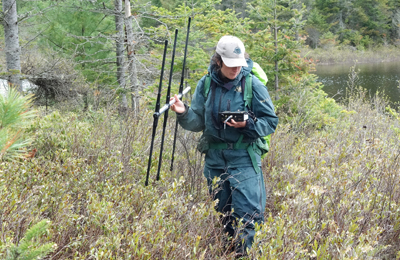
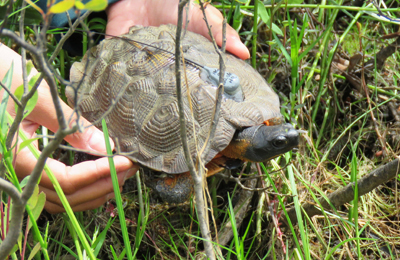
Tracking and preventing road mortality
Thanks to the data collected by telemetry tracking and to a regular road monitoring with the help of collaborators, the sections of road that are most problematic for turtle survival can be identified, and corrective measures can be implemented. Road signs are installed in those places to encourage road users to slow down. The La Mauricie National Park conservation team also installs structures to guide turtles off the road, such as drift fences. Plant rehabilitation also helps make medians less attractive to turtles.
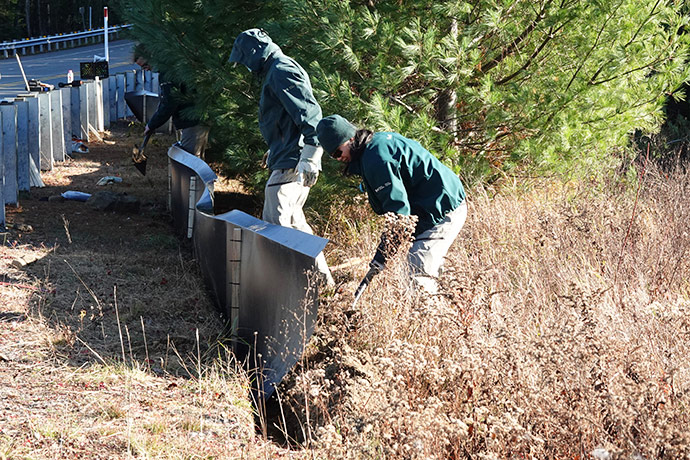
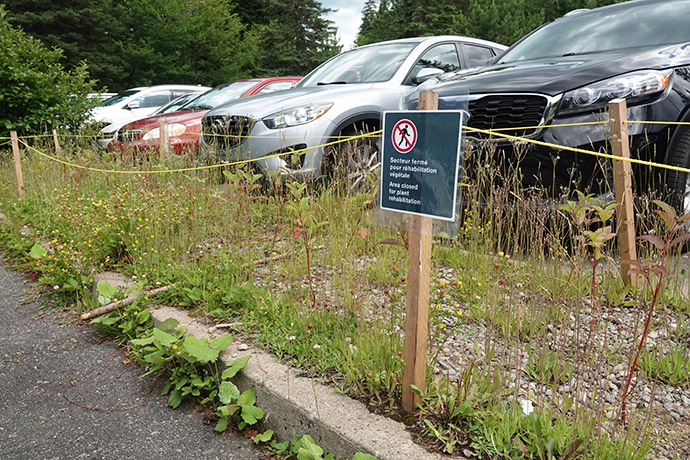
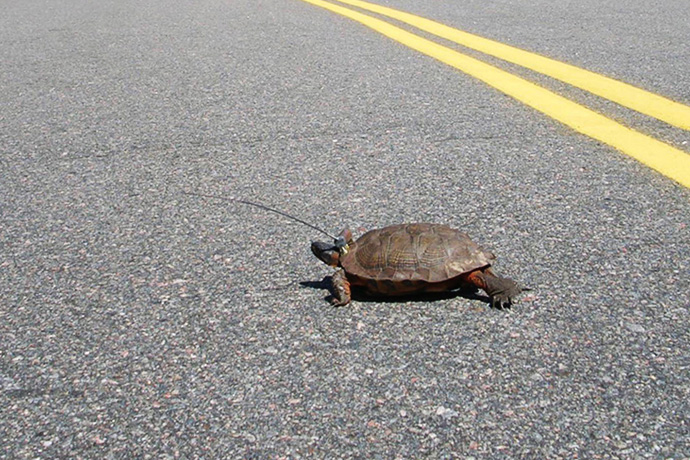
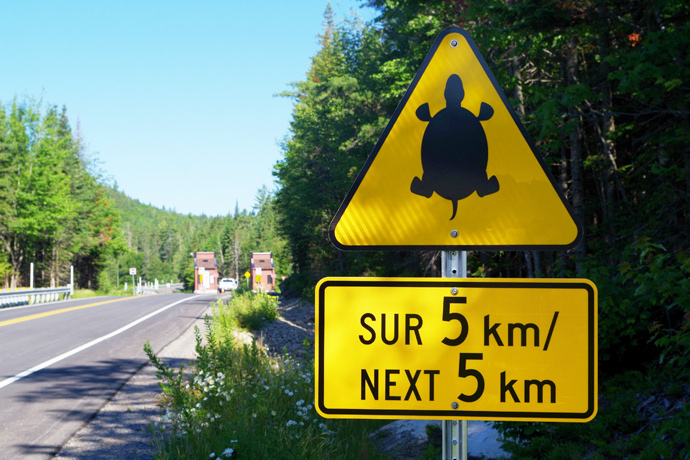
Working together to protect turtles
The wood turtle frequents habitats both inside and outside La Mauricie National Park. In collaboration with regional stakeholders involved in the Connectivité écologique Mauricie initiative, the park team is working to protect these habitats and the movement corridors of this endangered species. The objective is to maintain or improve access to the best available habitat for the wood turtle. A study on the ecological between the habitats frequented by this reptile was used to establish an initial overview of the situation and to guide how the area is managed.
To better coordinate wood turtle protection measures regionally, the park's conservation team is collaborating with a working group that includes numerous organizations involved in turtle conservation. Participants are working together to develop an Action Plan to Protect Turtles in La Mauricie region.
In addition, every five years, the conservation team participates in a capture-mark-recapture survey of wood turtles outside park boundaries to track turtle abundance. The more we know about them, the more we can do to protect them!
Get involved!
Here's how you can help protect the wood turtle:
- Stay alert on the road and reduce your speed to avoid road mortality, especially during the nesting period in June and hatching period in August and September.
- Stay at least 100 metres away from turtles.
- Do not disturb a turtle unless it is at the side of the road and you can help it cross safely.
- Report your sightings to the park reception centres or campground kiosks or online at carapace.ca.
- Comply with temporary closures.
- Stay informed using the park's Facebook page.
- Date modified :